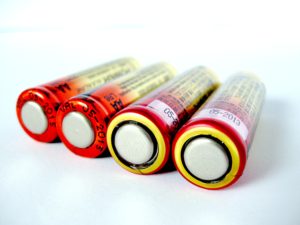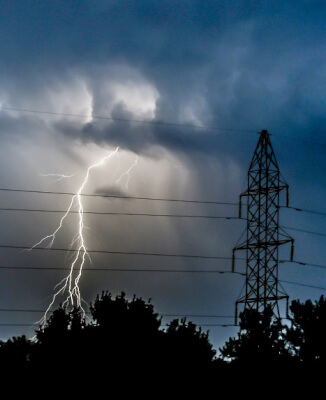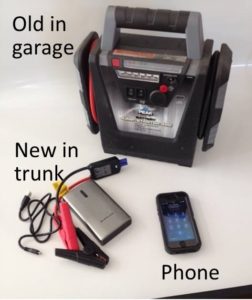Buy Batteries On Sale
Is getting batteries “on sale” a good idea?

Check out this article before you buy! Price isn’t the only factor. In the world of batteries, it seems you get what you pay for, and you’d better know in advance just what you need.
Some Background on Batteries (Skim if you already know all this!)
How batteries work
Batteries use a chemical reaction to do work. Alkaline batteries, the AA, C and D batteries we all know, typically depend on zinc interacting with manganese (through an alkaline electrolyte solution) to produce electricity.
Other batteries use different chemistries to achieve a higher “energy density” so they will last longer and perform better. Some of them: nickel–cadmium (NiCd), nickel–zinc (NiZn), nickel metal hydride (NiMH), and lithium (Li-ion),
In a regular alkaline battery, the reaction ultimately consumes the chemicals (leaving behind hydrogen gas as a “waste” product) and the battery dies.
When to recharge
While an alkaline battery can be recharged, the process is inefficient and dangerous because of the hydrogen gas buildup. Recharging non-rechargeable batteries can result in a leak or even an explosion.
Rechargeable batteries are designed differently. First, they use specific chemicals (most popular seems to be Lithium Ion, which is being used in Tesla batteries) that can undergo a “reverse chemical reaction” easily and efficiently. They contain a catalyst to keep hydrogen gas from forming. They have vents to prevent pressure from building up during recharging.
As you might expect, rechargeable batteries are more expensive because you have to buy that extra “charger.” However, studies suggest that you will save money over time using rechargeables, but they need electricity to work, so IN AN EMERGENCY SITUATION you will probably want to have regular disposable batteries on hand, too.
Getting the most out of batteries
No matter where they are stored, all batteries will ultimately die. Eventually, the steel casing will corrode and rust and leak. (Heat like we’ve had over the past several weeks can speed up the deterioration!)
Still, there are things you can do to preserve the life of your device batteries.
- Don’t attempt to recharge non-rechargeable batteries.
- Remove batteries from a device that you won’t be using for a while.
- Replace all the batteries in a device at the same time. (Clean the contacts with a cloth before you install the new batteries).
- Don’t mix different kinds of batteries in the same device. Use the same manufacturer, same type, same manufacture date.
- Store batteries in a cool, dry place. (Your car, in the summer heat, is not so good for preserving the life of whatever battery-operated device you store in there.)
- Don’t mix loose batteries with metal objects – like in your pocket with change. They can short-circuit and burn or explode!
Oh, and that story about storing batteries in the refrigerator? Keep batteries cool, but there’s no need to refrigerate modern batteries.
My phone’s my most important survival tool! What’s the best solution for it?
The battery already in your phone or computer may have to be replaced as some point. If so, you’ll probably have to get whatever the manufacturer requires.
But, you’ll be recharging that device many times before you have to get a new battery! In an emergency, of course, electrical power for recharging may be out or you may be nowhere near a wall socket. One back-up option is a device that holds an extra charge, just ready for you to plug in to when you need it.
So let’s look at portable chargers or Power Banks.

If your goal is to extend the life of your electronic devices, consider a Power Bank, otherwise known as a “mobile power supply,” mobile battery, external battery, spare battery, charging stick, or portable charger. These devices can keep you operating for days at a time!
If your time is worth anything, a power bank will be an inexpensive boost to your productivity and, in an emergency, to your peace of mind.
Power Banks are sized from something similar to a small flashlight to a device that resembles a small external storage drive. They all fit in a palm, pocket or purse, but may be a bit heavy to carry around all day. (Check the weight.)
As you compare them, look for:
- Capacity (measured in mAh, or milliampere hours). The higher the mAh, the more stored power.
You want enough juice to reload your phone or tablet completely, at least once and preferably more often than that! For example, one power bank model declares its 15,000 mAh are able to charge an iPhone 6 more than 5 times. To know how much capacity you need, get the specs on your device from the box it came in, or search online for “technical specs.”IS THE POWER BANK BIG ENOUGH TO DO THE JOB? Some negative reviews come from people who expect a small battery to recharge a much larger device. Doesn’t work!
- Output (measured in V, or volts). Generally, you want the power bank output to be the same as the input to your device. For example, your phone and Bluetooth headset probably each have 5V input.
- How many ports? Some of the chargers can “feed” as many as 4 devices at the same time. (You’ll need the right cord for each device.)
- What security against short circuits, over-charging or over heating?
The chart below will gives you a quick idea of features, options and prices. These models range from $20 – well over $100. Click on the image to go directly to more details on Amazon.
| BASIC 10,000 mAh. Two different charging speeds. Slim and lightweight. |
|
| FASTER CHARGE, MORE POWER 20,000 mAh. Charge multiple devices at once. |
|
| CHARGE LAPTOP About the size of a small book. LED lights show status. Charge laptop 2 1/2 times, phone 11+ times. |
What are the best batteries for our other emergency devices?
Disposable batteries
Understanding all that basic information listed above, we have tested disposable batteries – Energizer, Duracell and Kirkland (Costco brand) — multiple times for our emergency radios. These radios are used once a month for our Emergency Response Team drill, and then very lightly, so we don’t go through the batteries quickly at all. We do automatically replace them regularly (usually twice a year at the time change.)
Re results of our testing? There doesn’t seem to be too much difference in manufacturers, although our current favorite is the Duracell Coppertop with Duralock. You can get what you need at your local hardware or big box store, or add them to an Amazon order. Some packages have both AA and AAA sizes in one.
Rechargeable batteries
For multi-use devices, like our emergency radios, we prefer rechargeable batteries. We’ve found that rechargeables are often specified BY NAME by the manufacturer of the product. If specified, use ‘em. Other raters for rechargeables have consistently come up with Eneloop NiMH. These are made by Panasonic, and come in AAA and AA sizes.
Panasonic says these can be recharged 2,100 times! For that reason alone I would try them!
Solar chargers
Finally, don’t overlook the small solar devices designed to recharge your phone and/or other devices. Some emergency radios have small solar panels, and can recharge a phone.
There are also small, handy solar panels you can attach to your backpack and recharge while you go! They cost somewhere between $20 and $40. Here’s an example – click on the picture to get full details.

Whew, this is a lot of info, but given the fact that we all seem to invest in batteries on a consistent basis, it’s worth it to get the right battery for the job. Oh, and buying on sale? A good idea if you know what you’re buying.
But buying just on price alone makes no sense.
Virginia
Your Emergency Plan Guide Team
If you’re part of a Neighborhood Emergency Response group, you’ll need a budget for batteries for your walkie-talkies. Here’s an article with some ideas about financing your group’s efforts.




 Hundreds of thousands in the dark – again?
Hundreds of thousands in the dark – again?

 After years of backing a second car up to mine, fighting with jumper cables, etc., I was happy to get a portable battery charger. You can see it in the photo, labeled “old.”
After years of backing a second car up to mine, fighting with jumper cables, etc., I was happy to get a portable battery charger. You can see it in the photo, labeled “old.”






